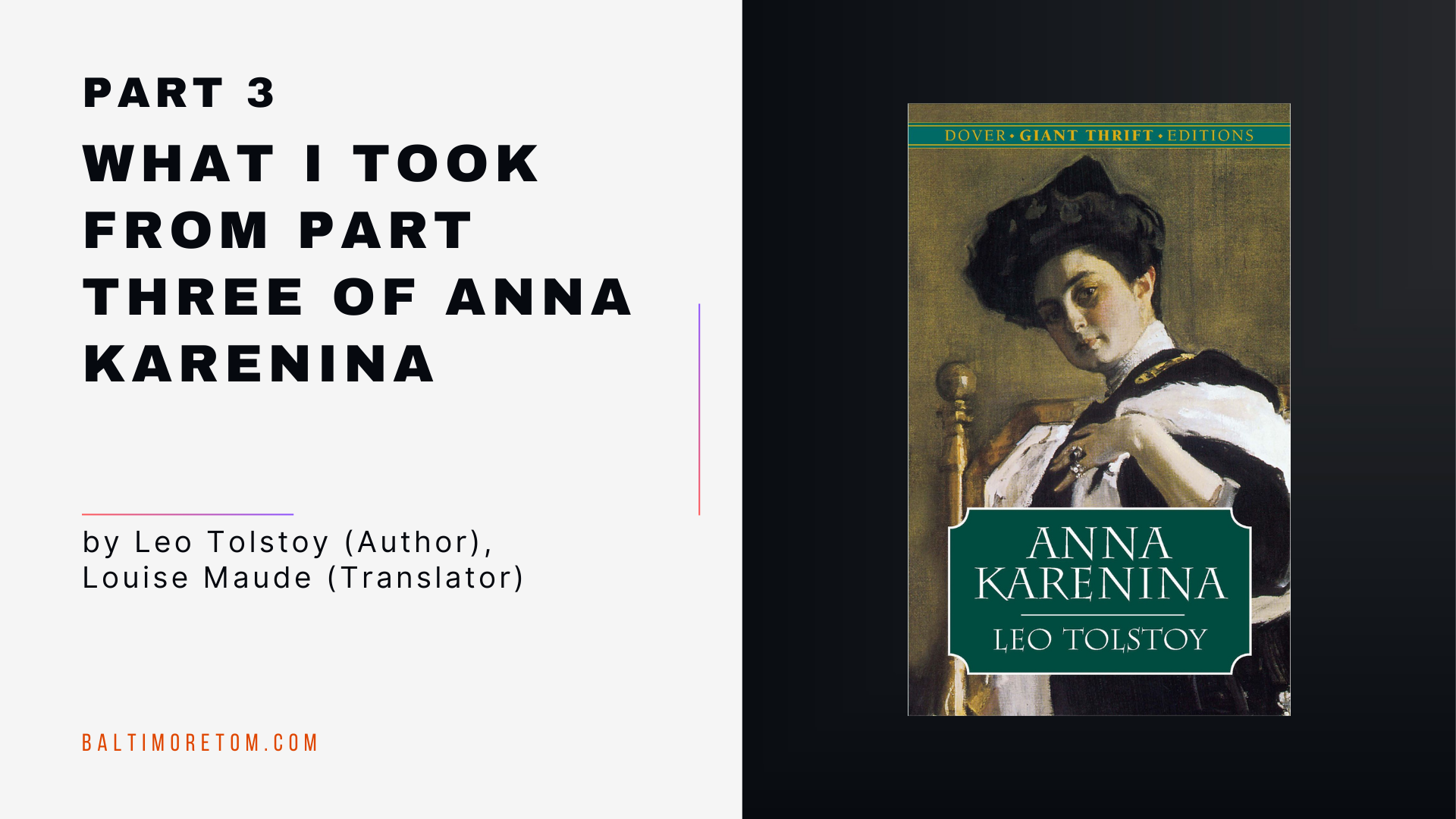What I Took from Part Three of Anna Karenina

Table of Contents
TL;DR
Part Three of Anna Karenina takes a quieter, more reflective turn as Levin searches for purpose through work and nature, while Kitty grows stronger after her rejection. The section explores how characters find meaning in different ways—Levin through physical labor and philosophical questioning, Kitty through resilience and self-discovery, and Anna and Vronsky through their increasingly complex relationship.
Provided by Claude Sonnet 4
A Quieter, More Reflective Turn
Part Three marks a shift in tone. After the emotional intensity of Part Two, the novel becomes more introspective. The story spends less time in the drawing rooms of high society and more in the countryside, hospitals, and private conversations. Characters begin to look inward. Their lives are no less complicated, but the turmoil feels quieter and more personal. There is less spectacle, more searching.
Levin in the Country
Levin returns to his estate, throwing himself into physical labor and the routines of rural life. His efforts to modernize farming methods are sincere but often frustrating. He tries to collaborate with the peasants, but there is a gap between his ideals and their experience. Tolstoy presents this without sentimentality. The land does not reward Levin’s efforts easily. It demands patience, and Levin’s own mind remains uneasy.
What stood out to me is how much of Levin’s struggle is internal. He wants to live a good and honest life, but he is constantly second-guessing himself. He compares his thoughts to others’, questions his worth, and cannot quite settle. Still, there is integrity in his trying. His work on the land is not just economic. It is a form of self-examination.
Kitty’s Recovery
Kitty spends much of this part of the novel abroad, recovering from the emotional collapse that followed Vronsky’s rejection. Her time at the spa introduces her to a quieter, more service-minded way of living. She begins to step out of her own sorrow by helping others, particularly in the care of a dying woman.
Kitty is not transformed overnight. Her world is still shaped by the expectations she was raised with. But her perspective is shifting. She starts to think beyond herself. The strength of this part of her story lies in its restraint. Tolstoy does not make a spectacle of her suffering or her healing. He simply shows a young woman beginning to see the world more clearly, and perhaps beginning to ask better questions about what kind of life she wants to lead.
Anna and Vronsky at a Distance
Anna and Vronsky appear only briefly in Part Three. Their affair is no longer speculative. It is a fact, and that fact has consequences. They are still moving within elite social circles, but tension is building. Karenin continues to watch Anna with increasing suspicion. Anna, in turn, seems caught between defiance and anxiety. Vronsky remains confident, but his world is beginning to feel narrower.
The most striking scene in this thread is the steeplechase, where Vronsky rides his horse to disaster. The moment is rich with symbolism, but also unnerving in its realism. His fall is not just a sporting mishap. It feels like a moment of exposure. The spectacle of the race, the quiet horror of the horse’s suffering, and Anna’s emotional reaction all signal that something has shifted. Nothing is resolved, but nothing is hidden anymore either.
Closing Thoughts
Part Three explores effort, discomfort, and the beginning of change. The characters are still circling their desires and their doubts, but now they are doing so with a little more self-awareness. Tolstoy slows everything down to show what it looks like when people start to question the stories they have been telling themselves. For Levin, for Kitty, even for Anna and Vronsky, the surface has cracked. What comes next is unknown, but the search for meaning has begun.